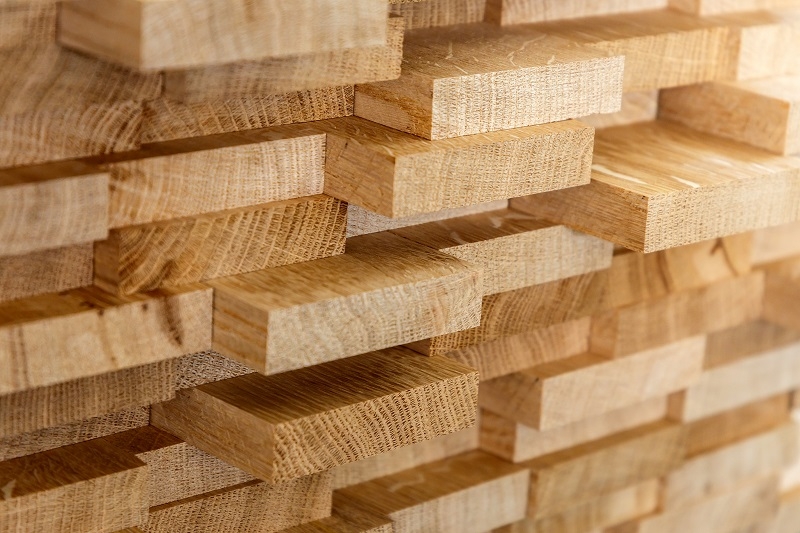Published: 19/07/23 By: Mike Bekin
In the world of timber, there exists a lot of jargon. To cut through the confusion and make sure everybody chooses the right wood for their construction projects, our team at EcoChoice likes to keep things simple. In this guide, we will be looking at the difference between air-dried, kiln-dried and fresh-sawn wood so that you know which would suit your needs.
Air-Dried Wood
Air-dried wood refers to timber logs and planks which are left to dry out in the open or in sheds. Usually, the timber is left for months or even years, as the moisture is given time to evaporate slowly from the planks.
The wood is ready when the moisture in the planks and in the air around them is the same. At this point, the timber is ready to use, although anything closer to 25% is already much more stable than the original 45-50% water content!
Many timber suppliers will place their timber into large well ventilated sheds in the early months of the year so that they are ready when the weather warms up. Summer heat speeds up drying, and by the time the weather becomes chillier again, the timber is much dryer.
Air-dried logs take much longer to weather so they’re usually sawn into boules. This helps the flow of air and the drying, making it ideal for projects where aesthetics are important, for example exterior cladding. You can also air-dry your own timber at home by building a log store, which is handy if you need firewood.
Kiln-Dried Wood
Kiln-dried timber is a little different from air-dried timber. Rather than leaving the wood to dry naturally over many months, the planks and logs are put in huge fan ovens, essentially ‘slow roasting’ the wood. The heat drastically accelerates how quickly water evaporates and can create drier timber, with a moisture content of around 12 to 18%.
Typically, kiln-dried timber takes anywhere from 10 hours to a few days to dry fully. The timber is very closely monitored so that the whole of the plank dries at the same time and cracking is reduced.
Once the wood is fully dried, it is stored away from moisture, ready to be processed and shipped straight to your construction site. Of course due to the energy intensity, KD wood can be expensive.
Air-Dried vs. Kiln-Dried
To work out which is right for you, it is best to look at the advantages and disadvantages of both.
Advantages of air-drying timber include:
- Bigger sizes available (beams for restoration is a prime market)
- Eco-friendly way to dry timber
- Retains natural colour after planing or sanding.
Of course, though, you have less control when air-drying timber, but from a construction point of view it is a great option.
Kiln-dried timber advantages include:
- Less prone to cracking
- Dries well with a precise moisture content
- Faster to dry
- High heat kills bugs
However, it is more expensive than air-dried timber, can absorb moisture quickly, and loses some of its natural colour.
Fresh Sawn Wood
Fresh sawn wood is not a drying process but it is a process which is usually done to air-dried timber and not kiln-dried timber. It refers to cutting the wood with a band saw, which has a fairly small toothed blade compared to other options. This creates a more rustic finish which is still neatly sawn. It is an even surface which is still a little rough to the touch.
Source Timber with EcoChoice
At EcoChoice, we supply construction projects around the UK with timber processed to your specifications. To learn more, get in touch with us today and start your timber order.
Image: Yevhenii Chulovskyi / Shutterstock.com
